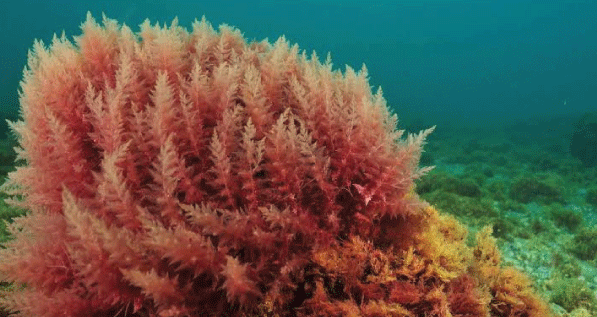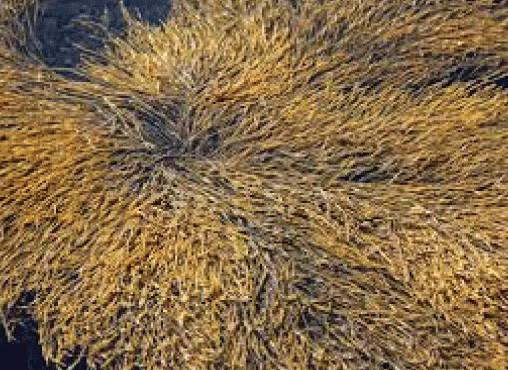Difference Between Red Algae and Brown Algae
Species belonging to the algae group are chlorophylls bearing plants, and they belong to the plant kingdom in the classification of species. Based on their general physical characteristics, algae species are further divided into multiple groups such as Red Algae, Brown Algae, Golden Algae, and Green Algae. Because these general characteristics differ in multiple algae species, they are classified among the different groups. Species belonging to a particular group of algae shares some common characteristics and features which differ in every group. Therefore, one group of algae is very different from others, such as red algae species have different features than species in green algae or brown algae group, etc., which make their separate classification structure in the classification of species. This article discusses the difference between Red Algae and Brown Algae groups based on their general features and characteristics.
Red Algae

Red Algae belongs to the division Rhodophyta, one of the oldest groups of the eukaryotic algae found on earth. The name Rhodophyta is taken from the Greek language where ‘rhodon’ in ancient Greek resembles a rose, and ‘phyton’ resembles ‘plant’. The Rhodophyta also comprises over 7000 currently recognized species (with all the ongoing revisions in taxonomy), and it is one of the largest phyla of Algae. The majority of species (approximately 6800) from the Rhodophyta division are found in the ‘Florideophyceae’ class, and most of them are consist of marine algae with multicellular division. The reddish color of Red Algae species is because of the masking of chlorophyll by the phycobilin pigments, which comprises phycocyanin and phycoerythrin. The pigment phycoerythrin from the Red Algae reflects red light and absorbs blue light, making them appear red. Red algae also are an important source of food which includes nori and many other things. In Asia, the high nutrient value of these foods, which includes vitamins and other minerals, makes them so much popular.
Brown Algae

The large group of multicellular algae, which comprises the class Phaeophyceae, are the brown algae, and it even includes many seaweeds which are located in colder waters environments of the northern hemisphere. Brown Algae also belong to a large group of eukaryotic organisms, and they even have more than 1500 species of them. All brown algae species are multicellular, and there is not even a single species that exist as colonies of cells or in single-cell form. Brown algae act as an important source of food in the marine environment, and thus they maintain the food cycle and food web there. Other than this, they act as potential habitats in the marine environment. Most of the brown algae species contain a pigment named fucoxanthin, and this pigment is responsible for their distinctive greenish-brown color, which is why they are called Brown Algae.
Difference Between Red Algae and Brown Algae
Both Red Algae and Brown Algae group belongs to Kingdom plant and are categorized under Algae species, but they have many differences in their general morphology and features like the difference in their appearance, different type of pigment present, etc. Following are some common differences between Red Algae and Brown Algae, based on their characteristics and features:
| S No | Characteristics or Features | Brown Algae | Red Algae |
|---|---|---|---|
| 1 | Flagella | Brown Algae have two flagella which are unequal and lateral. | Red Algae doesn’t contain flagella. |
| 2 | Pigments | Brown algae have photosynthetic pigments like chlorophylls a and c and also have fucoxanthin pigment (Which also causes their green-brownish color). | Red Algae have chlorophylls a and c as photosynthetic pigments and phycoerythrin as their third pigment, which is responsible for their reddish color). |
| 3 | Stored Food | Brown Algae contains laminarin or mannitol in stored food. | Whereas Red Algae have floridean starch as their stored food. |
| 4 | Cell Wall | Cells wall of Brown algae species contains algin and cellulose in dominant form. | The cell wall of the red algae group is composed of phycocolloids, pectin, and cellulose. |
| 5 | Grouping | Species belonging to the brown algae group are classified under the class Phaeophyceae. | Whereas species belonging to the red algae group are classified under the class Rhodophyceae. |
| 6 | Ecological Importance | Brown algae act as a major source of food, and thus they are an important component for maintaining food cycles and food webs in the marine environment. | Red algae are an important source of food for both marine species as well as it is consumed by humans because of their high nutrient value. |
The above are some common differences between red algae and brown algae groups, but species belonging to these two groups may also have many other differences.
